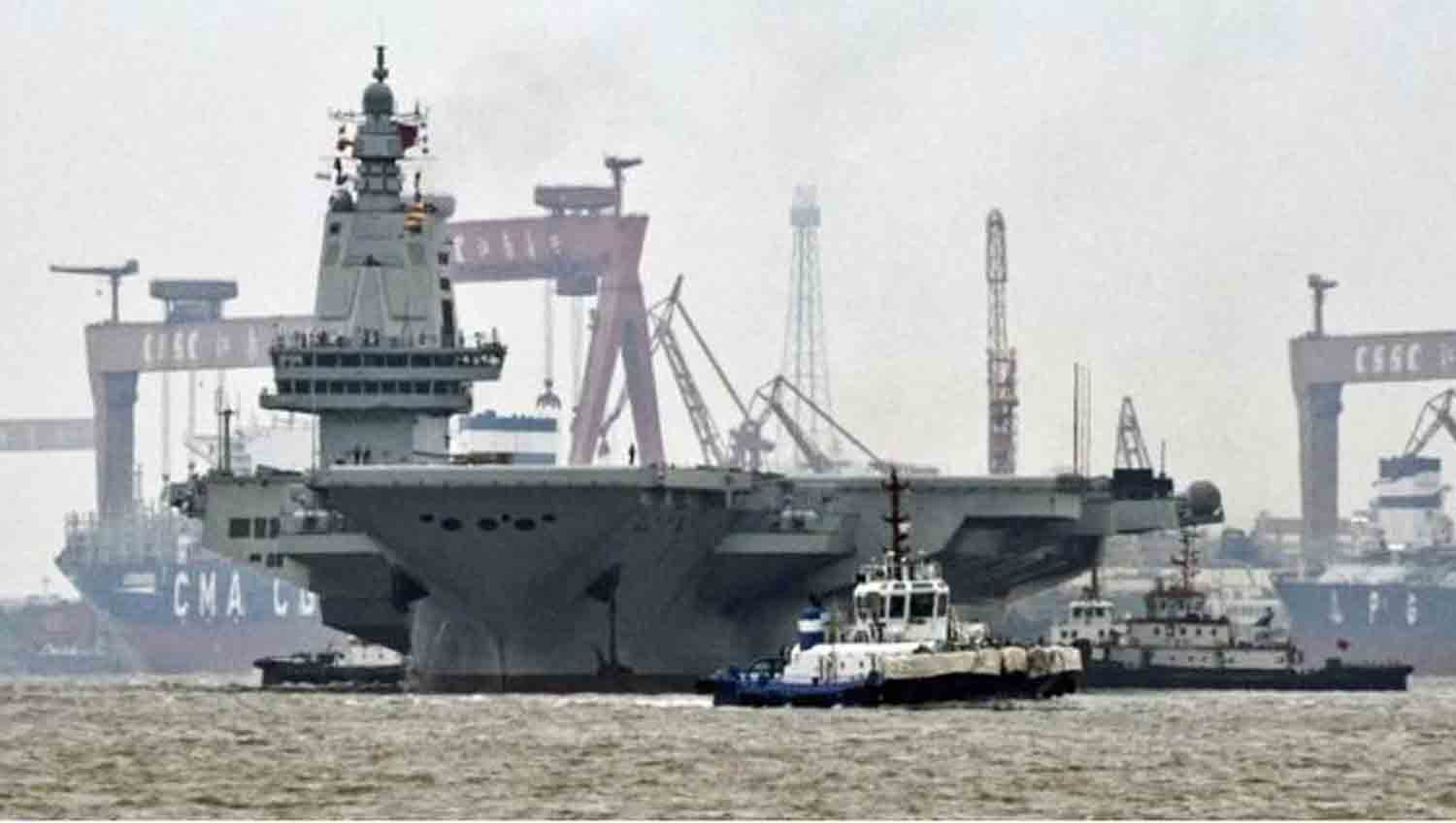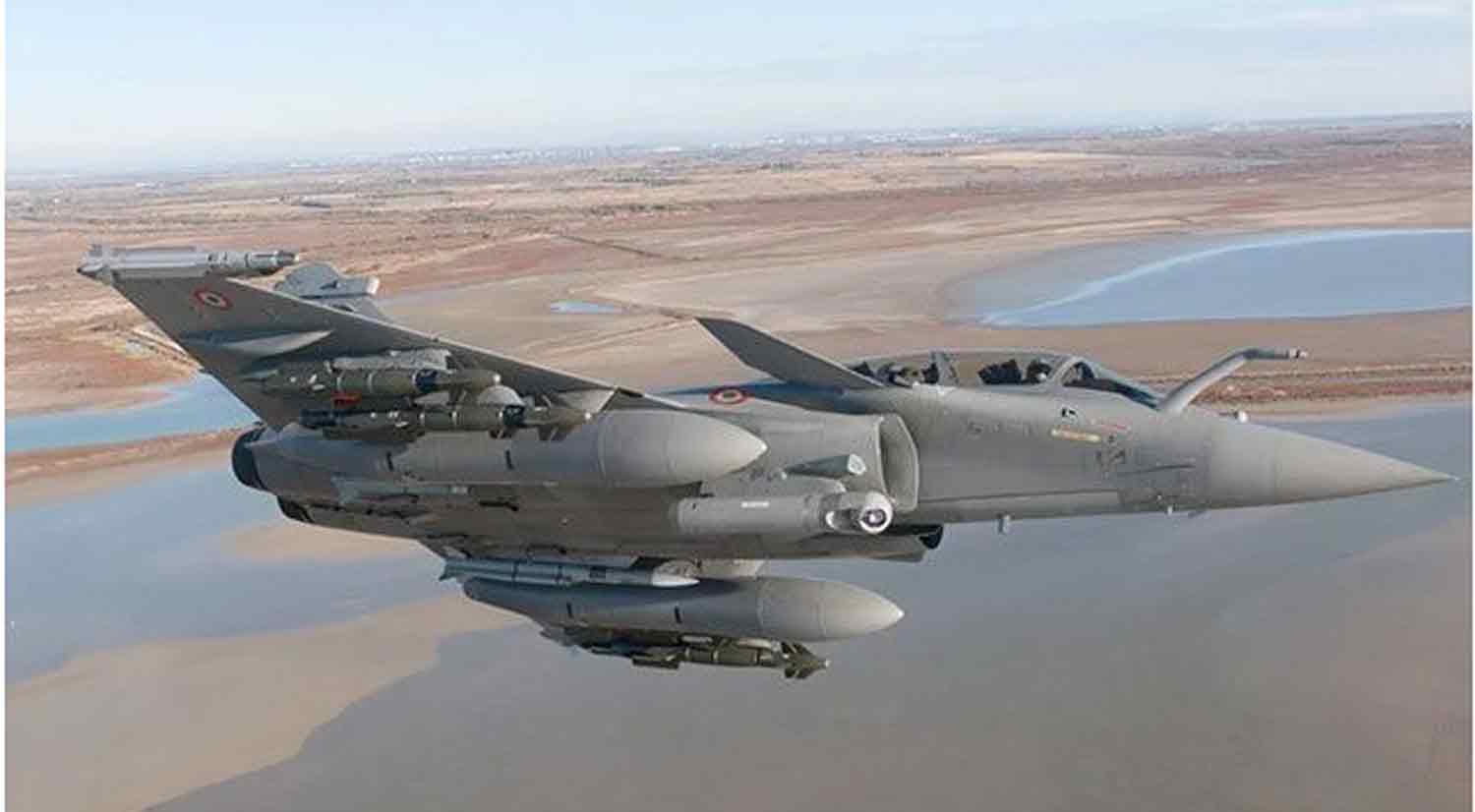In a notable advancement for China‘s naval forces, the Chinese aircraft carrier Fujian has been observed leaving dry dock to commence its sea trials. This event was documented in video footage shared by Clash Report, a prominent outlet for military and geopolitical news, showcasing the progress of China’s maritime fleet.
The video illustrates the Fujian moving smoothly through the water, reflecting the sophisticated engineering that characterizes this new addition to China’s naval capabilities. In a post on X, Clash Report remarked, “Chinese aircraft carrier Fujian has left dry dock today and began sea trials,” emphasizing the significant development of a vessel that has been under construction for several years.
Named after the province located on China’s southeastern coast, the Fujian signifies not only a technological advancement but also a strategic enhancement for China’s military positioning. Its launch highlights China’s aspirations to broaden its naval reach beyond its coastal waters, potentially reshaping the power dynamics in the Asia-Pacific region.
Viewers of the video commented on the carrier’s elegant design and the smooth transition as it moved from the dock into open waters. This moment is pivotal, marking the start of a series of evaluations that will test the Fujian’s operational capabilities, including its propulsion systems and aircraft management functions.
The sea trials of the Chinese aircraft carrier Fujian represent a significant milestone in its transition from the shipyard to operational waters, where it will undergo extensive evaluations to confirm its readiness for deployment.
These trials commenced with the carrier’s departure from the Jiangnan Shipyard in Shanghai, initially concentrating on the reliability and stability of its propulsion and electrical systems in maritime environments.
As the trials advance, they will incorporate more intricate evaluations. For example, the second sea trial is anticipated to include assessments of the propulsion systems, featuring maneuvers such as sharp turns and reverse sailing to test the carrier’s agility.
In later stages, the trials will broaden in scope, examining the carrier’s ability to navigate in tight spaces, execute emergency maneuvers, and function effectively in challenging weather conditions.
A critical component of these trials is assessing the carrier’s capability to conduct aircraft operations, particularly through the use of electromagnetic catapults for launching aircraft. This phase is vital for evaluating the reliability, speed, and efficiency of aircraft launches, as well as recovery systems like arrestor wires.
Additionally, communication and command systems will be rigorously tested to ensure seamless coordination between the carrier and other naval or aerial units. Safety and emergency protocols will also undergo thorough examination to protect both the crew and the vessel from potential incidents at sea.
The trial phases are sequential, with the initial phase lasting eight days, followed by progressively longer trials. This progression reflects an increase in both complexity and thoroughness of the evaluations. The entire process is anticipated to take several months, with the goal of ensuring that the Fujian meets all operational criteria prior to its official integration into the People’s Liberation Army Navy.
These trials not only assess the ship’s hardware but also serve as a training platform for the crew. They will gain hands-on experience with the carrier’s advanced systems, the nuances of carrier aviation, deck operations, and maintenance in a maritime setting.
The development and deployment of the Fujian are closely monitored by international military analysts and neighboring nations, especially in light of China’s increasing assertiveness in maritime disputes, particularly in the South China Sea. The carrier’s capabilities could significantly bolster China’s ability to project power beyond its shores, potentially altering regional security dynamics.
This initiative also indicates China’s ambition to compete with the naval supremacy of the United States, which has historically maintained a dominant naval presence in the Asia-Pacific region. With its cutting-edge technology and design, the Fujian is set to become a key element in China’s strategy to protect its maritime interests and establish itself as a formidable global naval power.
As the Fujian undertakes these sea trials, the international community will be closely watching each development, assessing how this fits into the larger geopolitical landscape of East Asia. The success of these trials could signal a transformative period in naval warfare, positioning China’s carriers as increasingly influential players in global naval strategy.
The video released by Clash Report not only highlights a significant technical milestone but also reflects the evolving dynamics of global naval power, prompting discussions about its implications for maritime security and international relations in the future.
The Chinese aircraft carrier Fujian stands as a powerful representation of Beijing’s naval aspirations, featuring an impressive suite of technology that ranks it among the most sophisticated carriers worldwide. Named after a province in southeastern China, this vessel serves as both a symbol of strength and a demonstration of advanced engineering.
Central to the Fujian’s operational capabilities are its three electromagnetic catapults, which align it with elite vessels like the U.S. Navy’s USS Gerald R. Ford. These EMALS (Electromagnetic Aircraft Launch System) catapults facilitate more efficient aircraft launches, providing benefits in speed, weight management, and the capacity to deploy a broader range of aircraft.
This advancement marks a considerable improvement over the ski-jump ramps utilized by China’s previous carriers, allowing the Fujian to launch heavier and fully loaded aircraft more effectively.
The carrier features a flight deck with an angled landing area and arresting gear for aircraft recovery, significantly enhancing its operational flexibility. This configuration supports simultaneous launches and recoveries, which is vital for sustaining a rapid operational pace during combat or crisis scenarios.
For its air wing, the Fujian is anticipated to accommodate a diverse array of aircraft, potentially ranging from 40 to 70 in total. Among these, the Shenyang J-15 fighters are expected to play a key role, offering both air superiority and strike capabilities. Additionally, there is excitement surrounding the potential inclusion of the Shenyang J-35, a stealth fighter tailored for carrier operations, which could greatly enhance the carrier’s combat effectiveness.
The Xi’an KJ-600, an airborne early warning and control aircraft, is anticipated to significantly enhance the carrier’s operational awareness, extending its surveillance capabilities over both air and sea well beyond the horizon.
Regarding its defensive features, the Fujian is outfitted with state-of-the-art phased-array radar systems that facilitate long-range detection and tracking of multiple targets, thereby improving its situational awareness. It also incorporates close-in weapon systems (CIWS) such as the HQ-10 and Type 1130, which are designed to defend against aerial threats, including missiles and drones, serving as a crucial last line of defense.
This formidable vessel is powered by a conventional propulsion system, which stands in contrast to the nuclear-powered carriers of the U.S. Navy. It employs steam turbines and diesel generators to manage its substantial displacement of around 80,000 tons, providing considerable endurance and operational flexibility, though it requires regular refueling unlike its nuclear-powered counterparts.
Additionally, the Fujian is equipped with an integrated power system (IPS) that likely aids in managing the energy requirements of its advanced systems, ensuring stable and efficient power distribution throughout the ship’s operations.
The combination of equipment and technology aboard the Fujian not only illustrates China’s naval advancements but also indicates its ambition to play a pivotal role in the geopolitics of the Asia-Pacific region. Each component has been carefully selected to bolster combat effectiveness, positioning the Fujian to transform China’s maritime power projection.
Discover more from Defence Talks | Defense News Hub, Military Updates, Security Insights
Subscribe to get the latest posts sent to your email.





